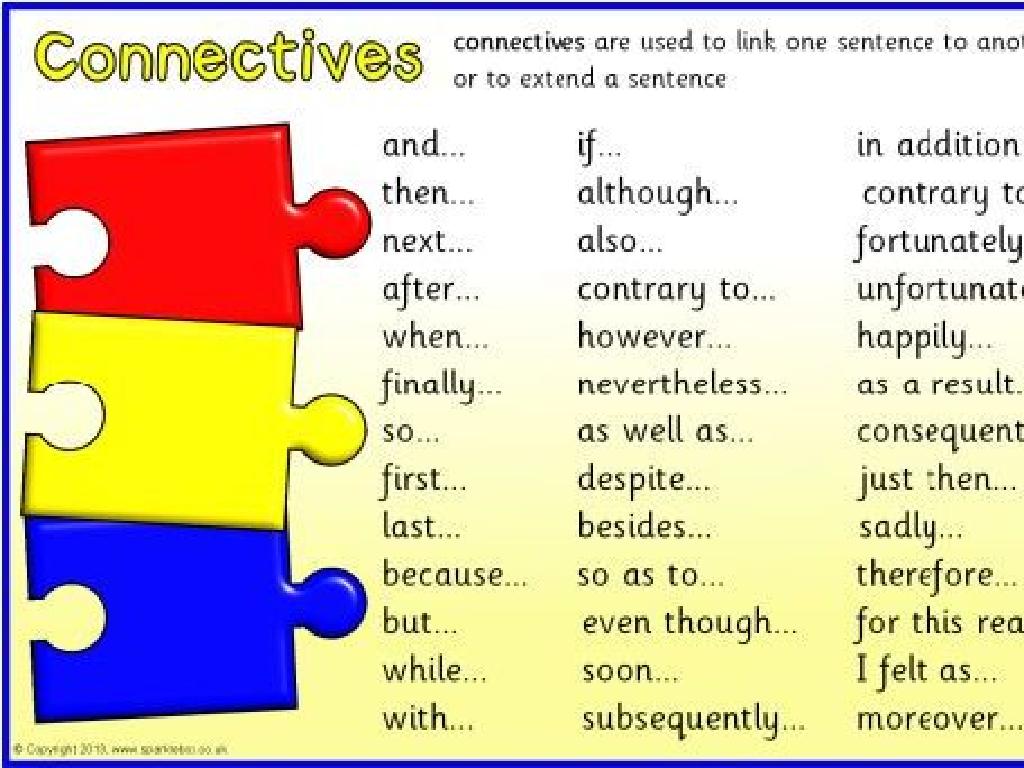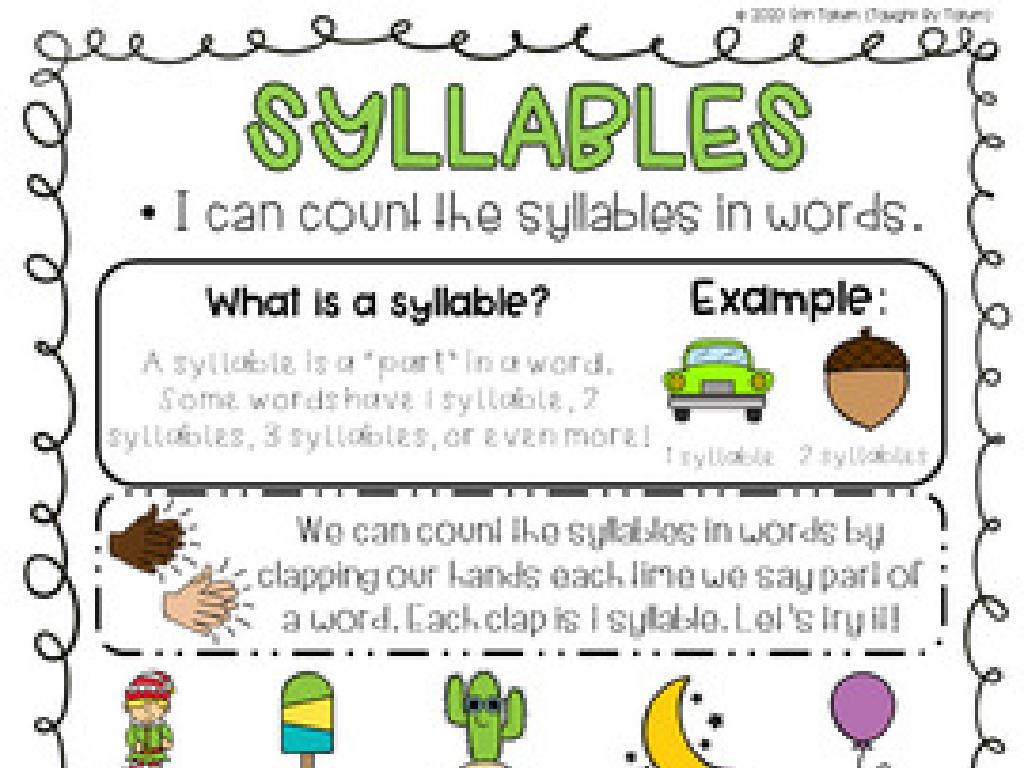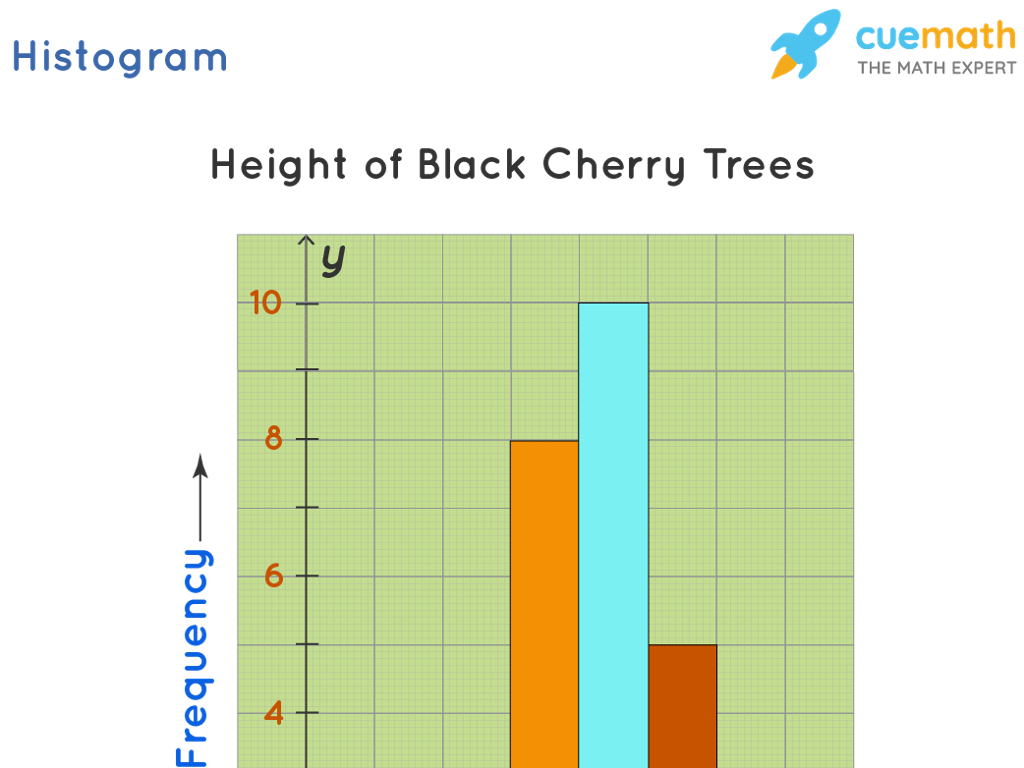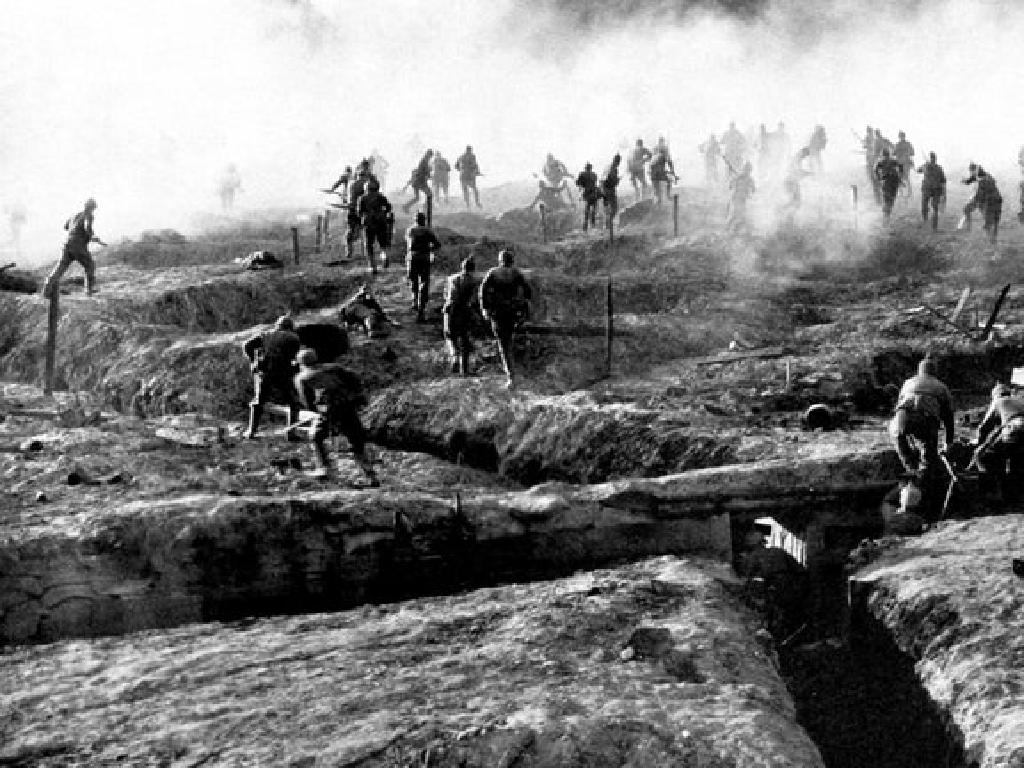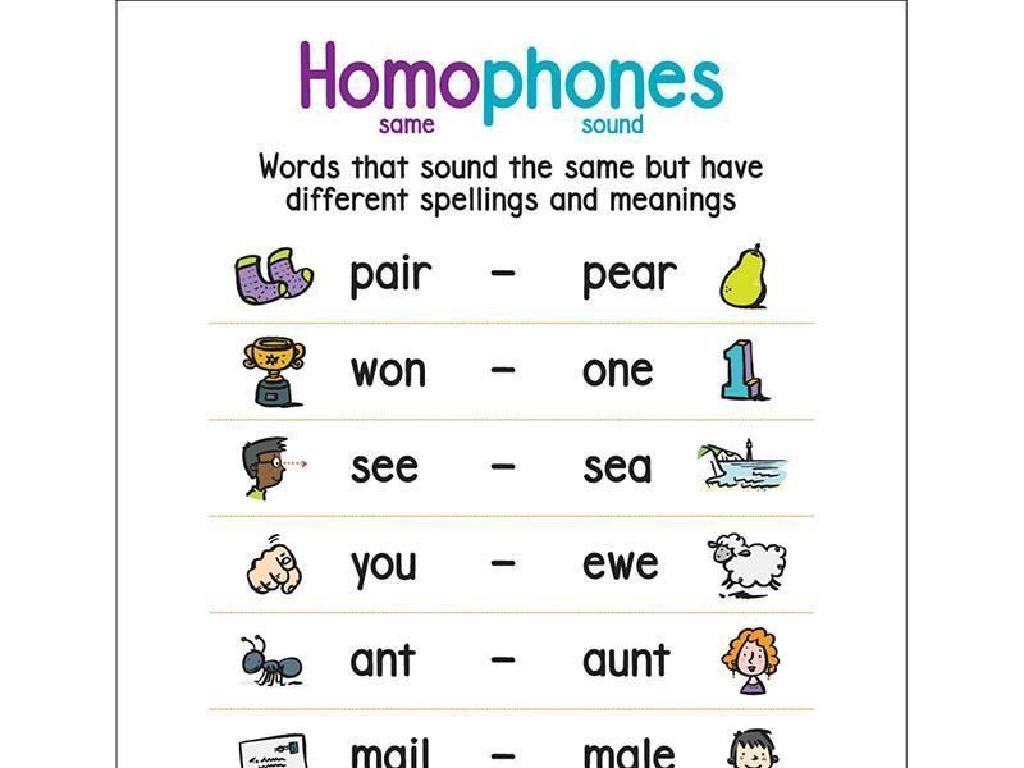Blend Each Sound In A Word Together
Subject: Language arts
Grade: Kindergarten
Topic: Blending And Segmenting
Please LOG IN to download the presentation. Access is available to registered users only.
View More Content
Welcome to Blending Sounds!
– Greet our Super Readers
– Become word detectives
– Use your ears to listen for clues
– Learn to blend sounds
– Sounds come together to form words
– Practice making words
– We’ll blend sounds like /c/ /a/ /t/ to say ‘cat’
|
This slide is designed to excite the students about the process of blending sounds to form words. Start by greeting the children enthusiastically, reinforcing the idea that they are ‘Super Readers’. Explain that they will be like detectives, looking for clues in the sounds to solve the mystery of how to create words. Teach them that blending is when you take individual sounds and combine them smoothly to say a word. Engage them in an activity where they practice blending sounds together to form simple words. Use visual aids and physical gestures to help them understand the concept of blending. For example, slide your fingers together as the sounds blend to form a word. This kinesthetic approach helps reinforce the learning objective.
The Magic of Blending Sounds
– Blending is a sound magic trick
– We combine sounds to form words, like magic!
– Building a sound train
– Imagine each sound as a train car.
– Linking sounds makes words move
– When we connect the sounds, we create words.
– Practice makes perfect
|
Introduce the concept of blending as a foundational skill in reading. Explain that blending is the process of combining individual sounds (phonemes) to form words. Use the analogy of a train, where each car represents a different sound, and as they connect, they form a word that ‘moves’ or has meaning. Emphasize the importance of practice in mastering blending skills. During class, engage students with exercises where they blend sounds to form words, and encourage them to practice at home with their parents or guardians.
Let’s Practice Blending Sounds!
– Start with simple sounds: s-a-t
– Say each sound individually
– Pronounce /s/ /a/ /t/ clearly
– Blend the sounds to form a word
– Slowly combine the sounds to say ‘sat’
– Practice makes perfect
– Keep practicing with different words
|
This slide is designed to help Kindergarten students practice the skill of blending sounds to form words, which is a key component of early reading. Start by introducing the individual sounds in a simple word like ‘sat’. Have the students say each sound separately, then slowly blend them together to form the word. It’s important to repeat this exercise with different words and encourage the students to practice regularly. This will help them understand how letters combine to make sounds and how those sounds create words. As a class activity, you can have students come up to the board and try blending sounds into words, or work in small groups to practice blending with their peers.
Blending Sounds with Actions
– Use hands to blend sounds
– Clap for each sound in a word
– For ‘cat’, we clap three times: /c/, /a/, /t/
– Slide hands together saying the word
– As we say ‘cat’, smoothly join hand claps together
– Practice with the word ‘cat’
– Try blending sounds to say ‘cat’ smoothly
|
This slide introduces a kinesthetic activity for blending sounds, which helps Kindergarten students understand how individual sounds merge to form a word. Start by demonstrating how to clap for each sound in a simple word like ‘cat’. Emphasize each sound as you clap. Then, show how to slide hands together while blending the sounds into the whole word. Encourage students to practice with ‘cat’ and then move on to other words. This activity not only makes learning fun but also reinforces the concept of blending sounds through physical movement, which can be particularly effective for young learners.
Fun with Blending Sounds
– Play a guessing game
– Listen to the sounds I say
– Put the sounds together
– Guess the word we made
– Example: /d/ /o/ /g/ makes ‘dog’
|
This slide introduces a fun and interactive game to help Kindergarten students practice blending sounds to form words. The teacher will articulate individual phonemes slowly and clearly, and the students will blend these sounds to guess the word. It’s crucial to encourage participation and celebrate correct answers to build confidence. For students who struggle, provide additional examples and guide them through the blending process. Possible variations of the activity could include using visual aids, having students come up to the board to write the word, or pairing students to work together.
Blending Sounds Together
– Practice blending sounds in pairs
– One friend says the sounds
– For example, one says ‘s-a-t’, other says ‘sat’
– Other friend blends them into a word
– For example, one says ‘c-a-t’, other says ‘cat’
– Take turns and help each other
|
This slide introduces a class activity focused on blending sounds to form words. Pair up the students and have them work together to practice blending. One student will pronounce the individual sounds of a word (phonemes), and their partner will blend these sounds to say the whole word. Encourage them to take turns in their roles to ensure active participation. This exercise will help them understand how different sounds come together to make words, which is a fundamental reading skill. Possible words to use: ‘mat’, ‘sit’, ‘pin’, ‘log’. Make sure to walk around the classroom to assist pairs that might be struggling and to ensure that each child gets a chance to blend sounds.
Story Time: Blending Sounds Together
– I’ll read a story with pauses
– Listen and blend the sounds into words
– Listen for individual sounds and put them together
– Shout out the words after blending
– Practice blending to form the word I paused at
– Let’s bring the story to life!
|
This slide introduces an interactive story time activity designed to help Kindergarten students practice blending sounds to form words. As the teacher reads a story aloud, they will pause at certain words, prompting the students to listen for the individual sounds and blend them together to shout out the complete word. This activity not only reinforces the concept of blending but also makes it fun and engaging, as students will feel like they are contributing to the storytelling process. The teacher should choose a story with simple, phonetically regular words that the students are likely to know. The teacher should also be prepared to provide guidance and encouragement, especially for students who may be struggling with blending sounds.
Class Activity: Blending Bingo!
– Let’s play Blending Bingo together
– Each student receives a Bingo card
– Cards have pictures and words to match
– Listen to sounds and blend them
– For example, if you hear /c/ /a/ /t/, blend to make ‘cat’
– Cover the matching word on your card
|
This interactive activity is designed to help Kindergarten students practice blending sounds to form words. Distribute the Bingo cards, ensuring each child has one. The cards should have a mix of pictures and words. As you say the segmented sounds aloud, like /b/ /a/ /t/, encourage the children to blend the sounds to form a word (‘bat’). If they have the corresponding picture or word on their card, they should cover it with a marker. This game will help students with phonemic awareness and the ability to synthesize sounds into words. Prepare a variety of words that match the students’ reading levels. Have prizes ready for winners to make the activity exciting and rewarding.
Congratulations, Blending Stars!
– You’re all blending stars now!
– Blending sounds helps read new words
– When we say the sounds of letters together, it makes a word.
– Keep practicing your blending skills
– Practice with different words every day.
– Soon you’ll be reading wizards!
– Reading will become easier and more fun!
|
This slide is a celebration of the students’ achievements in learning how to blend sounds to form words. It’s important to reinforce the value of blending as a foundational reading skill. Encourage the children to continue practicing by recognizing the sounds of letters and stringing them together to make words. Remind them that with consistent practice, they will become proficient readers. You can suggest that parents practice blending sounds with their children at home using simple CVC (consonant-vowel-consonant) words. Celebrate their progress and build their confidence by calling them ‘blending stars’ and ‘reading wizards’.

